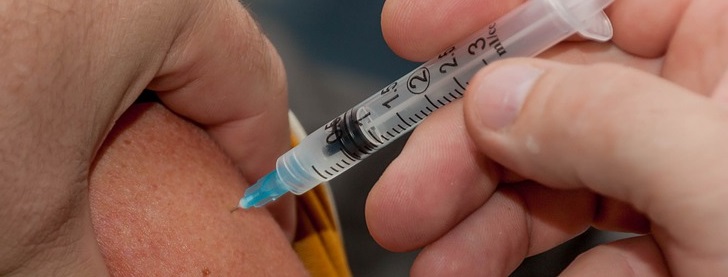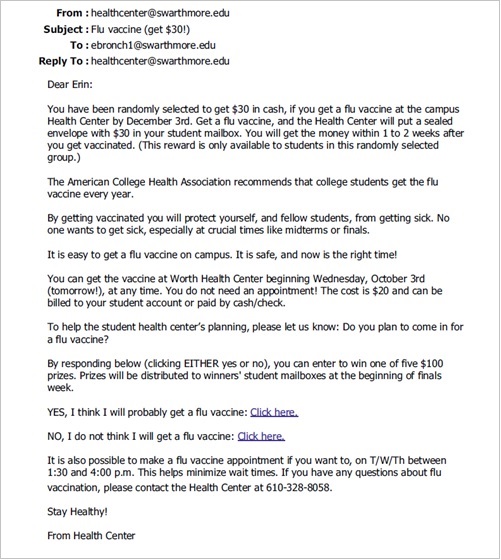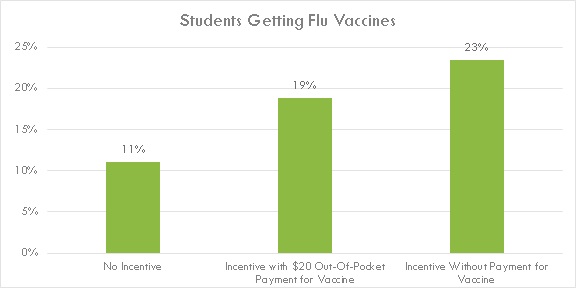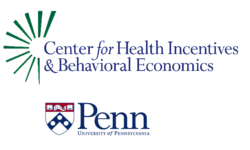
Vaccine Incentives for Students
Organization : Center for Health Incentives and Behavioral Economics
Project Overview
Project Summary
College students were offered $30 to get flu shots at on-campus health centers, but had to pay $20 out-of-pocket for the vaccine.
Impact
When offered the incentive, students who had to pay for the vaccine out-of-pocket were 7.8 percentage points more likely to get vaccinated. Those who could charge the vaccine to their student accounts were 12.4 percentage points more likely to get vaccinated.
Challenge
Despite the consequences of low flu vaccination rates for health and healthcare costs, and the wide availability of flu shots at low cost, the number of Americans who get their yearly flu shot falls well below the Center for Disease Control’s target vaccination rate. While some people choose not to get a flu shot, others intend to get vaccinated but may ultimately fail to follow through on their plans.
Design

The email message offering incentives to students
College students in Pennsylvania received one e-mail and two reminders from the campus health center offering them $30 in cash if they got a shot on-campus. The incentives were placed in the student’s mailbox within 1-2 weeks after getting vaccinated.
The e-mails and reminders contained the same informational details and were sent at the same frequency as a standard e-mail that was usually sent to all students. Students received the first e-mail 12-24 hours before the flu vaccines became available, a reminder with the same message 2-3 weeks later, and an identical final reminder after another 2-3 weeks.
Impact

This randomized evaluation found that offering a $30 financial incentive for getting a flu shot increased vaccination rates among college students by 7.8 percentage points on campuses where students had to pay $20 out-of-pocket for their flu shot.
On other campuses, students were able to have their flu shot billed to their student accounts: students who chose to do so did not have to make any out-of-pocket payments, and may have perceived the price of their flu shots to be zero. At these campuses, the incentives yielded a 12.4 percentage point increase in vaccination rates.
In contrast, neither email messages encouraging students to get vaccinated nor messages that made the risks of illness more salient to students had an observable impact on vaccination rates.
Implementation Guidelines
Inspired to implement this design in your own work? Here are some things to think about before you get started:
- Are the behavioral drivers to the problem you are trying to solve similar to the ones described in the challenge section of this project?
- Is it feasible to adapt the design to address your problem?
- Could there be structural barriers at play that might keep the design from having the desired effect?
- Finally, we encourage you to make sure you monitor, test and take steps to iterate on designs often when either adapting them to a new context or scaling up to make sure they’re effective.
Additionally, consider the following insights from the design’s researcher:
- Communications about the incentive should provide all the necessary information in one place, such as what individuals need to do, where they can do so, and when.
- Incentives do not need to be large to be effective. Smaller incentives can achieve a similar impact.
Project Credits
Researchers:
Erin Todd Bronchetti Contact Swarthmore College
David B. Huffman University of Oxford
Ellen Magenheim Swarthmore College


